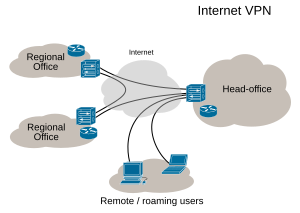 Image via Wikipedia
Image via WikipediaIn
EU influences overall in deploying of wireless phone system, but the
Wimax technology playing as a booming technology on data service in emerging word. Global Telecommunication investors giving their key concern on Wimax. Global vendor service provider already proposing their best equipment and services on WiMax Technology. The Wimax Technologies already implemented in all the continent across the globe.
 Image via Wikipedia
Image via WikipediaIn
EU influences overall in deploying of wireless phone system, but the
 Image via Wikipedia
Image via Wikipedia Image via Wikipedia
Image via WikipediaConcept of Virtual Private Networks
Concept of Virtual Private Networks predates data networking. The term is used by the traditional phone companies to refer to services offered to various entities. In some cases it is as simple as a leased line facility. In others it is a complete outsourced network that is carved out of the “public network” for an entity’s exclusive use.
A virtual network essentially a connection that appears to the users as a dedicated end to end connection. It is not important for the user to know actual route by the data. In fact the route will often change during the course of session. In order to make the network private (in an IP environment) other services must be implemented.
To ensure privacy several things must happen. The user must be verified to be eligible to use the VPN. This is accomplished through the use of RADIUS servers and share certificate methods. The data must be protected or made private. This is accomplished through various tunneling techniques.
With a private network, user expects a certain level of service. This requires the ability to implement Quality of Service schemes. While this can be accomplished, it becomes more complex in an IP environment with varied paths and providers. In a Mobile IP environment it is further complicated by mobility and roaming issues.